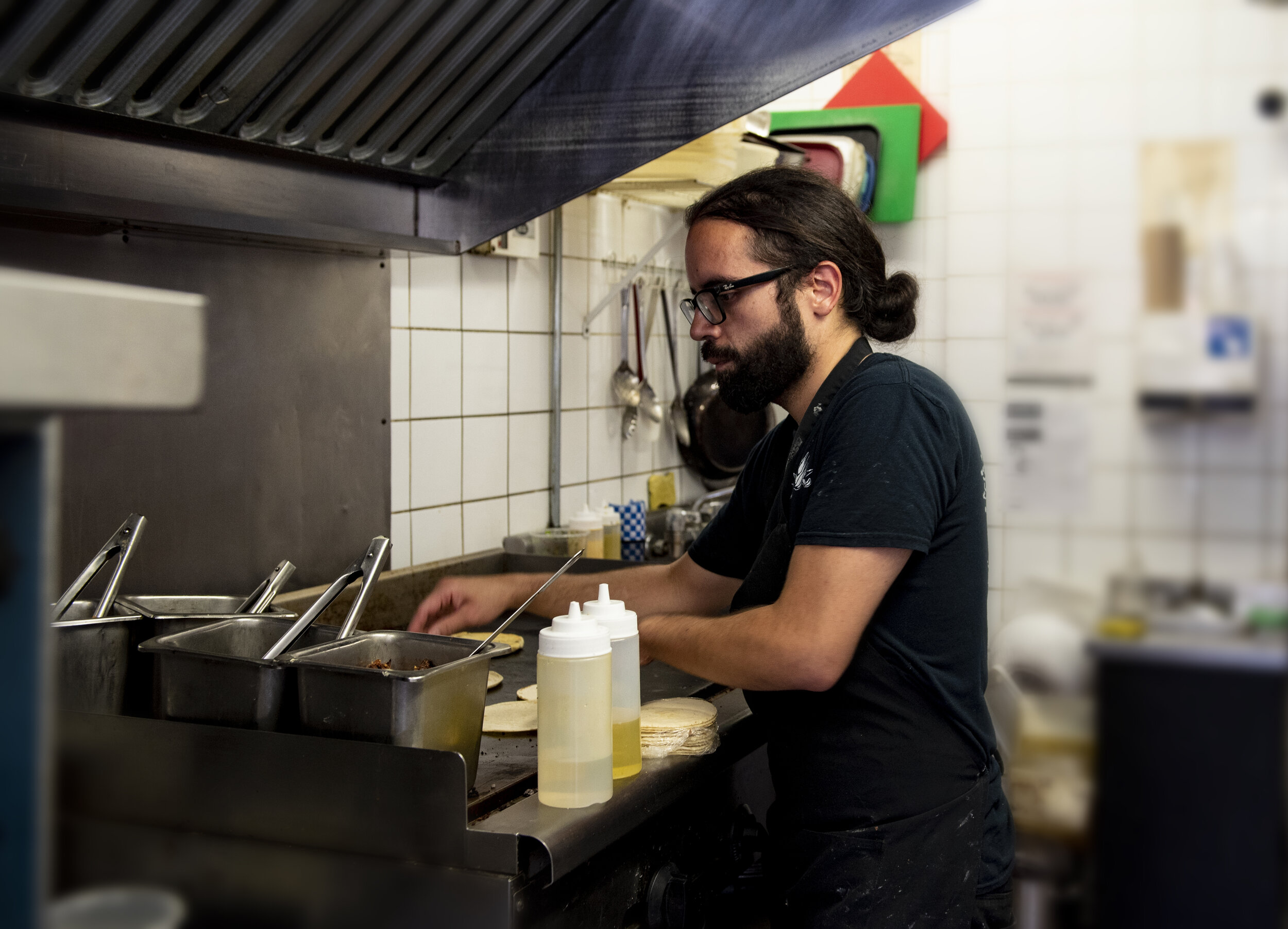
story
Casamiento MEANS “marriage” – and Rodriguez looks at his food as a marriage of different cultures.
René Rodriguez did not grow up making pupusas.
Sure, he grew up eating them. He’s from El Salvador, where the thick, doughy bean-and-pork-stuffed corn flour cakes are so popular they have their own national holiday. But it’s so rare to see a man behind the grill at a pupuseria that Rodriguez says he’s had older Salvadorian women come into his stand – Casamiento, at the El Gordo food court – and eye him suspiciously.
“They’ll look at me like ‘What the are you doing making pupusas?’” he laughs. “They’re like, ‘Who’s doing this for you? You got someone downstairs?’”
Casamiento is a name for a beans and rice dish, a combo that exists in just about every Latin American cuisine, but it also means “marriage” – and Rodriguez looks at his food as a marriage of different cultures.
Rodriguez arrived as a refugee from the Salvadoran Civil War in Canada as a child in the late 80s. He’s gone to culinary school, worked at a two-Michelin-star restaurant in Spain, and held a high-profile job as a chef at a winery in Niagara-on-the-Lake. But what drew him back to Toronto a few years ago was the Kensington Market mezcal bar El Rey.
“They were one of the only places in Toronto grinding their own corn to make their own masa,” he says, referring to the corn flour they used for tortillas. “I tried my first corn tortilla quesadilla in Mexico about 12 years ago and it blew my mind. When I saw a restaurant was doing that here, I thought ‘I want to be a part of that.’ So I took a massive pay cut and moved into a shitty apartment just so I could work there.”
But masa quesadillas were never El Rey’s main focus, and that’s what Rodriguez wanted to sell, so when another vendor told him about a vacancy at El Gordo, he jumped at the opportunity. But someone was already selling quesadillas there – the Tex Mex version, with regular flour – and there’s an unwritten rule at El Gordo to not sell the same thing as another stall.
Rodriguez leaned on his Salvadoran roots and put pupusa fillings inside a corn quesadilla. He even came up with a name for it: the pupusadilla.
That created confusion among diners, though, and he realized he should just go back to his cultural heritage and make pupusas. That heritage made him feel insecure, though: “I know it sounds dramatic, but it was a fear of mine to fail to represent a pupusa properly because it is so near and dear to my culture.”
Pupusa-making is labour-intensive, RENE DID NOT have the experience – he leaned on his culinary school background and taste. TAKING THE time to cut the meat small, roast it hard, in a way that’s non-traditional BUT ELEVATES THE FLAVOUR. time and care that goes into each one.

